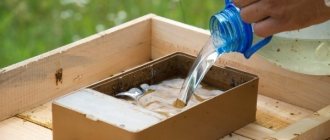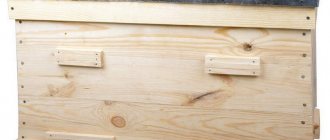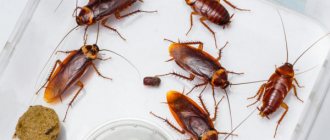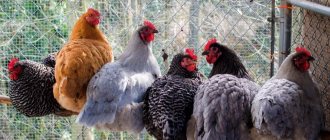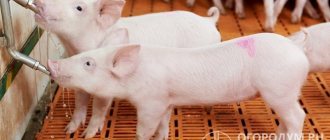A drinking bowl is a device from which domestic animals and birds are given water. It refers to household items included in the list of those whose presence is mandatory. This is because pets and birds need constant access to water. The lack of a sufficient amount of it can negatively affect their physical condition and lead to disorders that reduce the level of useful productivity.
The list of types of drinking devices differs in the characteristics of design, shape, materials of manufacture, methods of liquid supply, and others. An important factor determining the configuration of the drinker is the type of animal using it.
When keeping poultry, such as chickens, nipple drinkers are often used. The agricultural market offers a wide selection of drinking devices of this type. However, the possibility of making them at home is not excluded.
Peculiarities
Nipple drinkers for chickens consist of several main parts:
- water container;
- connecting tubes;
- shut-off valves;
- nipples.
The presence of certain parts, as well as their quantity, is determined by the design features of a particular drinker model and the characteristics of the chicken population.
A hermetically sealed container for containing liquid is a special tank, the internal volume of which allows you to hold a sufficient amount of water without losing it through evaporation or splashing. May be located outside the household space in which chickens are kept. In this case, water flows from the container to the dispensing point through tubes.
Tubes are made of metal, plastic, metal-plastic, polypropylene, rubber, silicone, polyvinyl chloride (PVC). The liquid, under the influence of gravity, flows from the tank to the discharge point or points. For normal operation of this hydraulic system, the main water container must be located at a level above the nipples. The pressure force pressing on the nipple from the inside depends on the difference in the height of these parts of the drinker.
Shut-off valves allow you to regulate the volume of liquid supplied. A pressure level that exceeds the norm contributes to overflow, increased consumption and humidification of the adjacent space. The adjustment makes it possible to control water flow and eliminates the factor of wetting the surrounding area, contributing to the cleanliness of the chickens' keeping conditions.
The nipple is the main design detail. This is a mechanism that works on the principle of a check valve, preventing water from flowing freely from the system. Nipples installed in chicken drinkers are a device consisting of a metal or plastic tube with a diameter of 4 to 8 mm. It has the edge of the outer edge bent inward along the entire diameter. This allows you to hold the main locking element in it - a metal rod. The size of its diameter and the special expansion of one of the sides have an optimal ratio with the diameter of the inner bend of the edge of the tube, which allows the ball not to fall out of the tube, resting against the bend, thereby ensuring clogging of the outer edge of the tube.
The opposite edge of the nipple device is adapted for its connection to the water supply system.
The connection can be made using a threaded or union connection.
Principle of operation
The nipple drinker for chickens operates on the principle of continuous dosed liquid supply. The water, which is in a special container, completely fills the system when the valves are open.
Under the influence of gravity, the liquid, being at the lowest point of the system, presses on the rod located inside the nipple. The thickening of the inner edge of the rod rests against the bend of the edge of the tube and creates a seal that prevents water from leaking out.
The chicken, wanting to drink water, presses with its beak the edge of the rod protruding from the nipple tube. The seal is broken, causing water to leak out. Due to its properties, the liquid does not splash randomly, but flows down the rod, falling directly into the bird’s beak.
Manufacturing
Let's consider the process of making a drinking bowl yourself.
Selection of materials
The design of a homemade nipple drinker for chickens can be extremely simple. However, when making it, it is worth taking into account the factors of environmental friendliness, hygiene and practicality.
It is not recommended to use materials whose properties suggest the subsequent appearance of rust, oxidation, or siltation. The list of non-recommended materials includes:
- metal parts (pipes, connections and others);
- technical materials (hoses, fittings, containers intended for use in combination with aggressive liquids).
Main requirements for the device
When choosing a drinker, poultry farmers take into account the number of planned livestock, bred or purchased at the same time, as well as technical characteristics:
- capacity - the average water requirement of chickens is twice that of feed. To prevent rapidly growing young animals from experiencing thirst, sufficiently capacious tanks are needed;
- shallow depth (for open-type structures) - active individuals with open access to water can choke or even drown. To avoid such situations, it is recommended to take shallow containers; the ideal option when raising young animals is to use closed-type devices;
- autonomy - since it is not possible to fully control watering, the device must provide automatic supply of drinking water so that the chicks can quench their thirst at any time;
- environmental safety - in the manufacture of the device, high-quality materials (plastic) that do not emit toxic substances should be used. If you purchase a factory-made drinker, you must make sure that the product has passed certification;
- simplicity and reliability of operation - it is important to ensure the convenience of the design for filling and cleaning, to provide protection for water from clogging with food and excrement;
- stability - to prevent overturning, the container must be well secured to the wall of the poultry house or to the floor.
Drinking water for poultry should be as clean and of high quality as for people
What should a high-quality drinking bowl be like for laying hens and broilers?
Regardless of what kind of drinker is used in your chicken coop, it should be:
- Convenient. Not only for the bird, but also for you. Changing the water should be quick and hassle-free.
- Durable and stable. You don’t monitor birds 24 hours a day, so we don’t always know what they’re doing in poultry houses and cages. Sometimes chickens fight, frolic, and are trampled by a rooster. All this can lead to overturning or damage to the water container, which means excessive dampness and lack of drinking for the entire herd.
- Safe. The best option for a drinking bowl is high-quality plastic. Metal containers can release harmful substances, especially when interacting with medications. Also, the drinking bowl should have edges and corners rounded on all sides so that the bird does not get hurt.
Do-it-yourself nipple drinker for chickens: step-by-step instructions
Let's learn in detail how to make a nipple watering system for chickens. In fact, the process is not the easiest, but it can be easily done on your own. But the result will delight your birds with clean and fresh water. All parts for work can be bought at any store.
What you will need:
- Drill or screwdriver;
- Drill diameter 9 mm;
- Polypropylene (PVC) pipe with a square section of 22x22 mm or round;
- Nipple 1800 or 3600;
- One tee;
- Two plugs;
- Canister or other plastic container;
You can choose a plastic pipe of any length at your discretion. The only thing that needs to be taken into account is that the distance between the nipples should be 10-20 cm (depending on the bird density).
Nipple drinker assembly process
Cut a piece of pipe to the required length.
We mark the points on the pipe where the nipples will be mounted and drill holes.
We wrap the nipple thread with fum-leth to ensure sealing.
Screw in the nipple using a socket wrench or wrench
Now you need to connect two pieces of pipe with screwed-in nipples in the tee, and also install plugs along the edges. For the tee you will need a threaded adapter; it will screw into a container of water.
I managed to assemble this design. All connections can be made with a soldering iron or simply sealed with sealant. The pressure in the system is low, so there should be no leaks.
Now we attach the drinking bowl to the container. And as a result we get the following system:
An example of installing a nipple drinker in a poultry house
Setting up a chicken coop. Drinking bowls (28 photos + 3 videos + 1 GIF)
This post is a continuation of previous ones on the topic of keeping chickens (I’ll leave links in the comments). As before, the information is of a specific nature, so if you came here looking for something entertaining, I immediately warn you that it is not here. It’s better to close the post immediately so as not to waste time.
Water. No one can survive on our planet without water. If you decide to have chickens, then you should remember this. Birds need drinking water. Many people believe that chickens can easily drink water from a puddle. Let's look at this in more detail.
Chicken "device"
Food and water entering the bird’s body are retained in the crop for some time. If stale food, pathogenic bacteria, rotten water get there, then all this is mixed with the rest of the food in the crop. Under the influence of body heat, all this begins to quickly turn from food into a poisonous bomb. Chickens' metabolism is much faster than ours, and they themselves are much smaller. And if such a volume of poisoned food causes even serious poisoning in us, then the chicken’s liver will clearly not cope with such a load, which is why it may die.
By breeding poultry, we do not plan to become executioners, dooming animals to a long, painful death. For this reason, all experienced poultry farmers always advise feeding the bird with fresh, clean water. But how to ensure this? Is an old rusty basin suitable for these purposes?
I bet 99.99% that within the first five to ten minutes any kind of garbage, dirt or droppings will end up in such a container. I don’t think it’s worth describing what processes will begin next. Well, what if no one washed this container before pouring water into it? I would like to see what will happen if such a careless poultry farmer drinks this all the time. Do you think he'll like it?
But if you are not so cruel, then which drinking bowl should you choose? Let's look at what they are.
Vacuum drinkers
Vacuum drinkers are very easy to maintain and manufacture, which is why they are so common on sale. And among homemade ones, these are the ones that predominate.
I saw such a drinking bowl as a child - my grandmother made it for chickens. To do this, she filled a jar with water, covered it with a saucer, inserted a match between the neck of the jar and the saucer, and turned it over. Until the chicks drank enough water to open the neck, no air could enter the jar, causing water to be retained inside. And the water pouring out again clogged the jar, and the process stopped.
Another option for a nipple drinker
The following design is made according to the principle described above, only at one end there is a fitting in which you can connect a hose from a water supply or container.
A simple drinker made from a square PVC pipe and nipples with a drip eliminator
By the way, drip-catching cups come as additions to nipples and are also sold in stores. Installation of such a system is carried out using brackets or ordinary wire.
Options for simple nipple drinkers from scrap items
You can make a nipple drinking system with your own hands from any preferably plastic container, as long as there are nipples. The photo below shows a drinking bowl made from plastic bottles and a plastic bucket.
Just drill holes and screw in the nipples.
Plastic bucket waterer for chickens
Installation of drop eliminators and heating
In order to reduce water consumption, automated chicken drinkers are equipped with special drip catchers, which look like small cups located directly under the nipples. They serve to catch water so that it does not fall on the floor. Such nipple drinkers are indispensable for chickens. At the same time, this is an additional source from which chickens can also drink water.
Drop eliminators are purchased together with nipples in specialized stores or made by yourself. If you don’t want to make devices for collecting water, you will have to resort to a rag placed under the drinking bowl every time.
To make your own drip eliminators, you can use ordinary construction plastic profiles or simple household plastic bottles with a capacity of 0.5 liters as a basis.
You can watch the video on how to make drop catchers. And then nipple drinkers for your chickens can be easily installed with your own skillful hands.
Many farmers equip their home-made inventions with heating systems to prevent water from freezing during the cold season. For this purpose, heating elements installed under the water tank or water heaters for aquariums are used.
Operating principles of drinkers
Vacuum drinkers are designed quite simply; many homemade drinkers work on the vacuum principle. The pressure does not allow a large amount of water to spill out, and the bird always has liquid available. The disadvantage of this type is that dirt easily gets into the open tank.
Nipple drinkers are simple drinkers that can be purchased in stores or made independently. Activated by pin movements. They are used in prefabricated systems connected to a single water tank.
Mounted drinkers are a simple water reservoir. This design is almost no different in operating principle from ordinary saucers and basins.
Float drinkers provide a constant water level that can be controlled. They are stable, often protected from overturning, and can be placed either on the floor or suspended.
Siphon drinkers are suitable for a small number of birds; they are simply designed. The volume of liquid in the gutter is replenished by a water reservoir.
Space layout
No matter how small the chicken coop is, it must have:
- perch;
- nests;
- sippy cup;
- feeders;
- ventilation;
- lighting;
- ash pan;
- sandbox;
- entrance hole for passage into the enclosure;
- “infirmary” - a place for separating sick birds;
- storage space for equipment.
When planning the placement of work areas, it is customary to proceed from the calculation of the number of birds per square meter of room.
Special reference books usually provide different data, since most of them are designed for industrial poultry keeping. Amateur poultry farmers should proceed from the calculation of the required number of eggs, and, accordingly, birds. 2–3 chickens per square meter of area seems comfortable enough for year-round keeping of laying hens at home.
Wall-mounted sippy cups take up virtually no space; the container is usually placed on shelves at higher points. Hanging or wall-mounted feeders also occupy a small area along the walls.
It is best to hang the equipment or place it on a separate shelf where the bird could not fly into. The most important thing for winter indoor maintenance is an open, uncluttered floor area.
It is on the floor that the bird should not feel crowded. 0.25–0.4 sq. a meter is usually occupied by a box of sand or ash for ash baths. The vertical placement of perches and nests depends on the height of the existing room.
Laying hens, being healthy throughout their lives, are able to fly to a perch to a height of 70 to 110 cm, depending on the breed. The take-off is carried out almost vertically, in contrast to the “flying off” from the perch, which occurs along an inclined trajectory.
It is important that there is nothing sticking out and interfering with the hens when they take their place on the roost.
Some birds, regardless of breed, like to walk along an inclined ladder and take their place on the perch by moving along it. Others prefer to take off directly between birds that have already roosted for the night. The bird lands on a hard floor, and to reduce injuries, it is better to provide a soft floor surface by first covering the floor with shavings.
Laying hens, in the process of establishing a hierarchy, will certainly chase each other in the cramped space of the chicken coop, causing a chicken commotion. Therefore, when planning and arranging a room, it is advisable to avoid sharp and protruding corners that could injure the bird.

